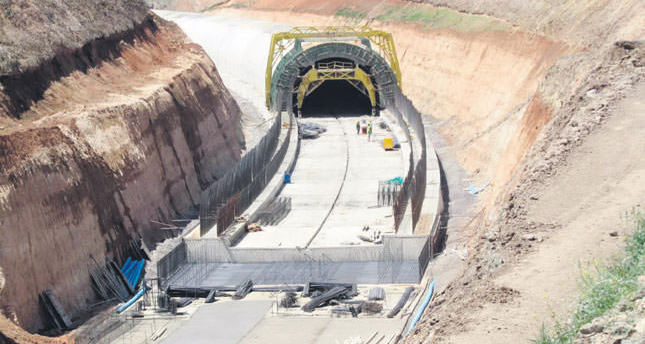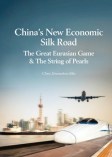Moody’s Rates Belt and Road Initiative “Overall Credit Positive” but Warns China Of Risks
Moody’s Investors Service has issued a report stating that China’s Belt and Road initiative (BRI) – which aims to strengthen linkages between it and a host of countries in Eurasia and beyond – will benefit its own economy and corporate businesses, but will also pose challenges in how risk will be allocated between participating Chinese entities and the participating sovereign nations.
Moody’s also warns that officials face significant logistical and fiscal challenges due to the significant credit risks in doing business with some of the country’s partners eager to sign up to the infrastructure-targeted plans, many of which have poor credit profiles. Among the participating countries, Moody’s estimates less than 40 percent would be considered as having relatively “high financial strength”.
“The initiative will result in increased exposure by Chinese issuers to countries with comparatively poor credit profiles, including weak financial strength, high susceptibility to event risk, and unfavourable business environments”, said Lilian Li, a Moody’s vice-president and senior analyst. “On average, the Belt and Road nations have high susceptibility to event and political risk and/or risk to external vulnerability, as well as poor infrastructure networks and unfavourable business environments.”
Its figures show 54 percent of Chinese Belt and Road-related investment has already flowed to countries rated “Ba1” (judged by the agency “to have speculative elements and significant credit risk”) or lower since 2013.
One key unresolved issue it highlights is how risk will be allocated between the Chinese government, and the entities handling the funding or investments. It also warns that Chinese banks, major commercial lenders, and state-owned enterprises (SOEs), which are largely expected to bear the brunt of supporting the Belt and Road projects, may be exposed to unhealthily high implementation risks.
“Large funding from (Chinese) policy banks to countries rated with high implementation risks could lead to asset quality erosion at the banks and increase contingent liabilities”, Moody’s reports.
So far, the report says, the impact on Chinese banks has been limited, with Belt and Road-related overseas loans representing just three percent of their total loans till the end of 2016. Given the political national significance of the Belt and Road, however, Moody’s says Chinese lenders will be most supportive of projects that are operated by strong central government-backed SOEs. Unsurprisingly, weaker recipient countries involved in BRI projects, view any investments and trade opportunities from China as potential growth drivers.
Nonetheless, Moody’s warns, too, that any significant Chinese economic slowdown in future, and accompanying efforts to re-balance its economy, could have “mixed effects” on Belt and Road-related countries whose primary exports to China are unrefined commodities and raw materials. Official statistics show imports from Belt and Road countries have dropped slightly since 2014, due to lower domestic demand and commodity prices.
“Any increased reliance on Chinese lending could also induce a negative shift away from international financial institutions in the financing structure of some Belt and Road countries”, the report states. Historically, international financial institutions have been the staple funding sources for these countries, but often with strict “concessional terms” firmly in place.
Another possible ill-effect of the Belt and Road Initiative is the possible negative impact on some countries not involved in related projects.
The geographic coverage of the Belt and Road has expanded to close to 70 countries in Asia, Africa, the Middle East, Europe, and Oceania, according to government statistics. These countries represent a third of global GDP, two-thirds of the global population, and a quarter of global foreign investment flows, according to Moody’s.
China has been ploughing an increasing share of its total outbound direct investment (ODI) into Belt and Road-related projects since its launch in 2013. By the end of 2015, Moody’s quoted official government data showing stock of ODI to Belt and Road nations had reached US$115.7 billion, 10.5 percent of China’s total ODI stock.
In 2015, the Belt and Road nations attracted US$9.2 billion worth of Chinese M&A deals, 17 percent of China’s total, up from four percent in 2014, with deals signed as far afield as Israel, Kazakhstan, Singapore, Russia, and Laos. China obtained US$126 billion of new infrastructure contracts from Belt and Road countries last year, accounting for more than half ( 52 percent) of China’s total engineering, procurement, and construction contracts globally.
Chris Devonshire-Ellis of Dezan Shira & Associates comments “Moody’s report is interesting but isn’t essentially valuing anything – the B&R initiative is a concept and involves hundreds of component parts. One cannot purchase stock in “Belt & Road” rendering the comments as academic in interest only. Nonetheless Moodys raise important questions about the nature of debt and liability. China will need its future diplomatic skills to deal with many upcoming issues throughout Eurasia and Belt & Road financing.”
About Us
Silk Road Briefing is produced and written by Dezan Shira & Associates. The firm provides governments and corporate businesses worldwide with strategic, legal, tax and operational advisory services to their SMEs and MNCs investing throughout Eurasia and has 28 offices across China, India, Russia and the ASEAN nations, and partner firms in Central Asia. We have specific and long term experience in China and the OBOR countries. For assistance with OBOR related issues, please contact the firm at silkroad@dezshira.com or visit the practice at www.dezshira.com
Related Reading:
![]() BRICS Nations Contemplate Independent Credit Agency
BRICS Nations Contemplate Independent Credit Agency
Silk Road and OBOR Business Intelligence
Dezan Shira & Associates´ Silk Road and OBOR investment brochure offers an introduction to the region and an overview of the services provided by the firm. It is Dezan Shira´s mission to guide investors through the Silk Road´s complex regulatory environment and assist with all aspects of establishing, maintaining and growing business operations in the region.
China’s New Economic Silk Road
This unique and currently only available study into the proposed Silk Road Economic Belt examines the institutional, financial and infrastructure projects that are currently underway and in the planning stage across the entire region. Covering over 60 countries, this book explores the regional reforms, potential problems, opportunities and longer term impact that the Silk Road will have upon Asia, Africa, the Middle East, Europe and the United States.








